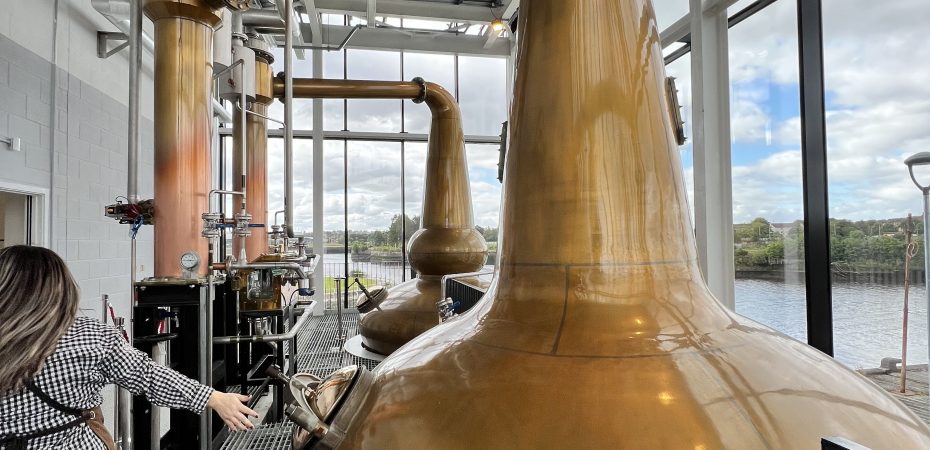Today we head to our hotel to spend two days in Glasgow. Colin, who has been our driver and guide for the past week is very excited. He is from Glasgow and can’t wait to show off his city. As I mentioned, he is a wonderful story teller and, as we enter the city, he begins to tell us about Saint Mungo.
As I listen and look out the window, I catch sight of a wall mural. Glasgow has amazing street artists and later today, I will be taking a walking tour of some of the street art. This one, with the mother, child and robin, is stunning. The artist is SMUG (aka Sam Bates) an Australian living in Glasgow.
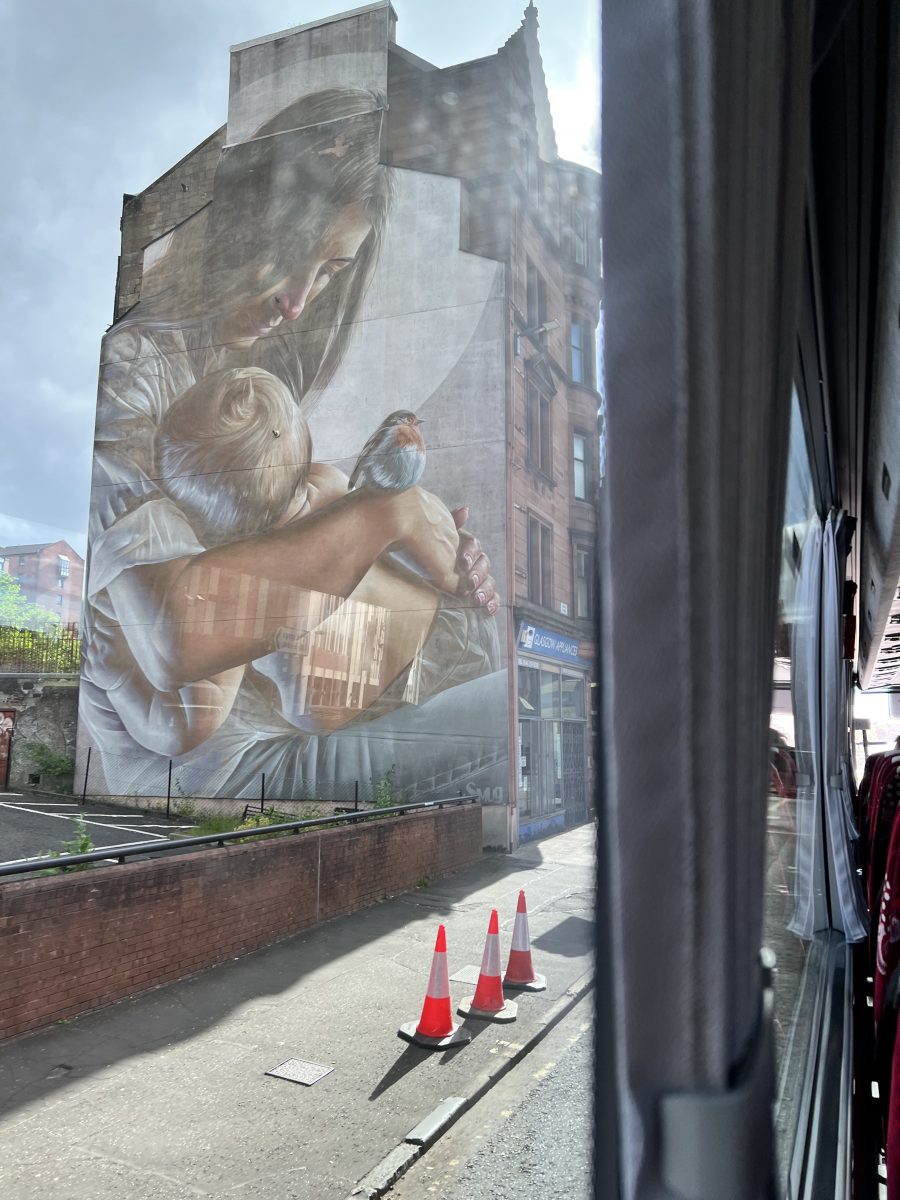
Colin started telling us about Saint Mungo. Usually he tells it while wating at the hotel but we were off for an early start. I’ll write it just the way Colin told it throughout the coach ride.
Colin begins his story about a man who was born in 518 AD. His mother was a princess. When the king found out she was pregnant, he ordered her killed. She escaped and Mungo was born at a small village called Culross. At this point, Colin had to stop the story because of road blocks. It turned out that on this sunny, Sunday morning, there was a 10K marathon happening in the streets.
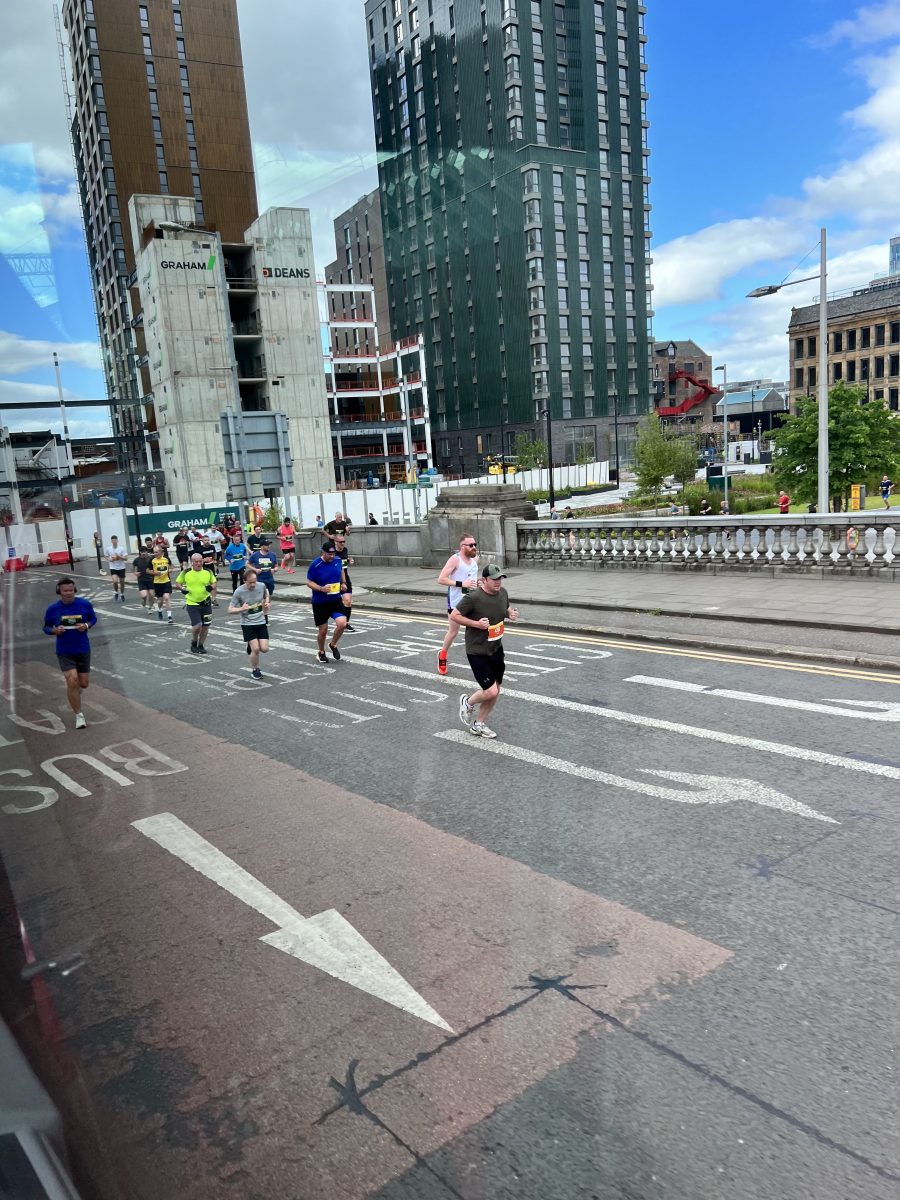
Travelling along Cambridge St. Colin pointed out how two lanes had been taken out to make bike lanes. “It’s made driving and absolute mess”. He also mentioned how, when Glasgow hosted the Climate Change Summit, they had over 100 coaches busing dignitaries around. He managed to make his way around and take the long route to our first destination – the Victoria Fountain and the People’s Palace. Our distillery tour was at 10 am so we had time to do some sightseeing
Saint Serf knew the boy was special so treated him differently than the other monks. They got jealous and tried to pin indiscretions on Mungo so he would be put out of the monastery. Serf had a pet wren. The monks killed the bird and put it in Mungo’s room. Later, Mungo cupped the dead bird in his hand, blew on it, and the bird flew away.
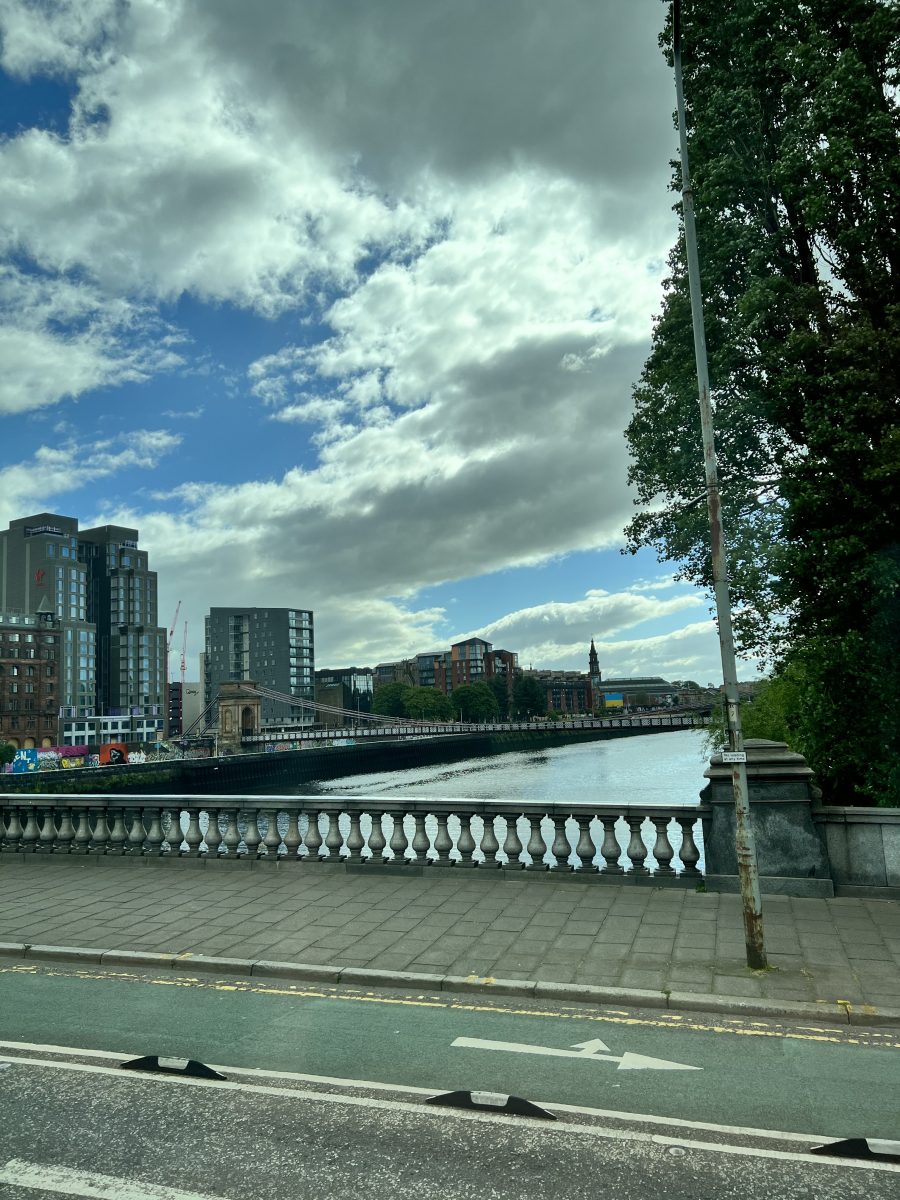
He pointed out George Square and the Charing Cross Tenements, built in 1850. We would have a official city tour tomorrow with a step on guide.
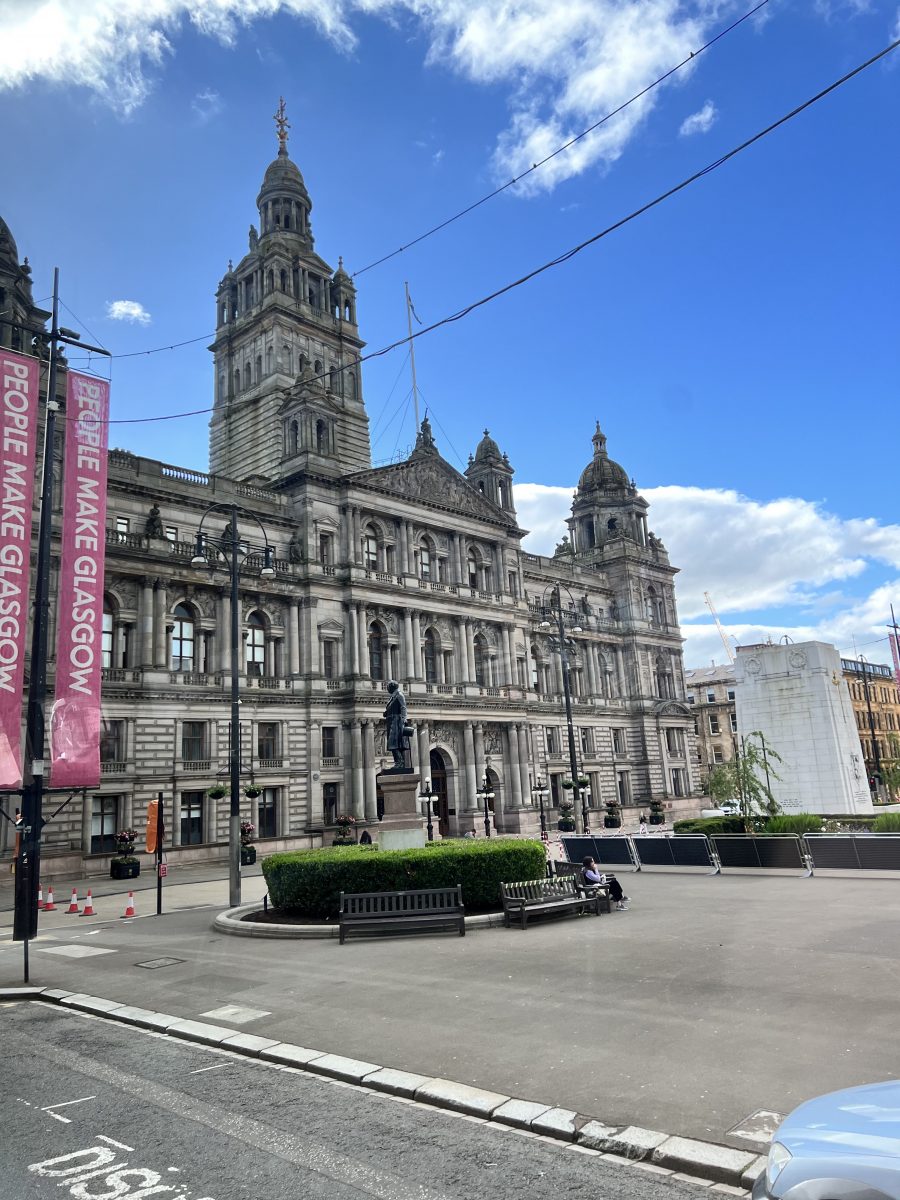
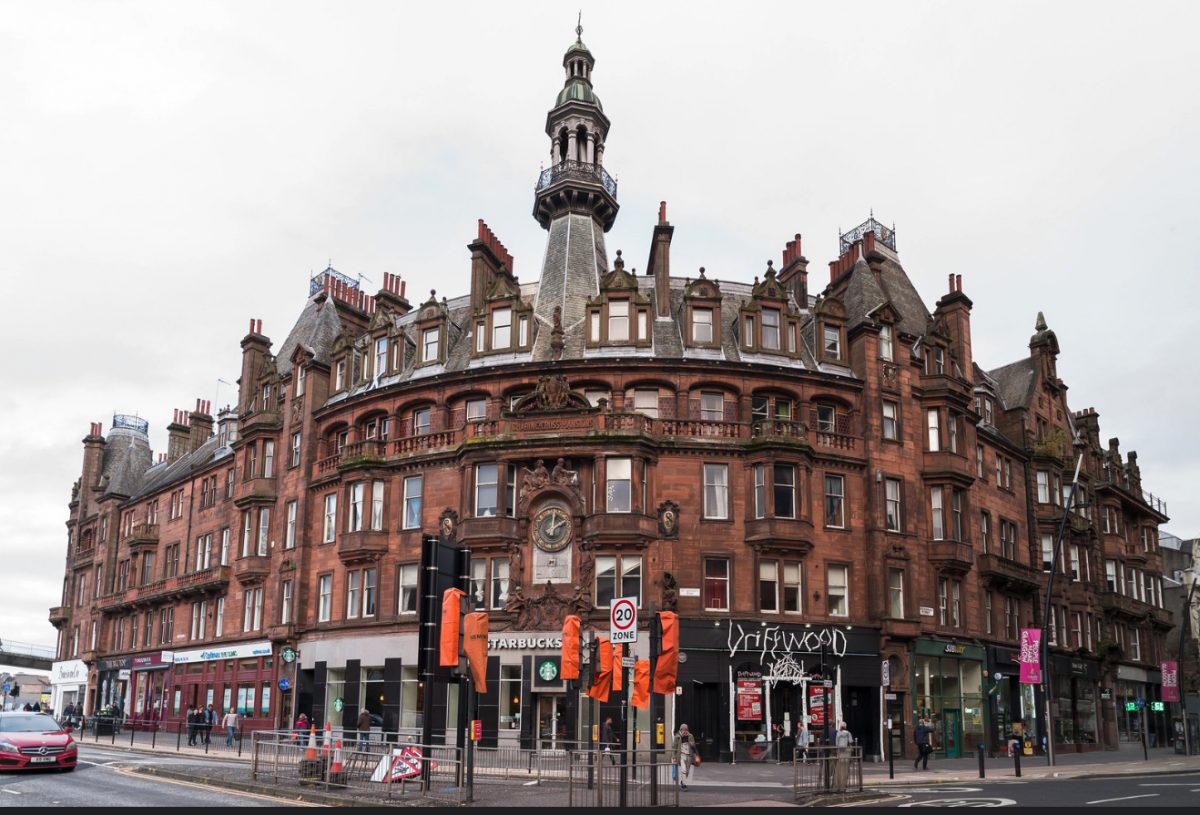
On our way, he started the story again. Mungo was raised by Saint Serf who gave Mungo his name. Mungo took up the missionary work along the River Clyde. His first church was located at present day Glasgow. Supposedly, it was Mungo who gave the name Glasgow which comes from the Gaelic “Cleschi” which means Dear Green Space. However, the local ruler was pagan and anti-Christian so Mungo had to leave and retire in Wales.
We reach the Victoria Statue in the Glasgow Green in the east end of Glasgow. The chimney in the back is the Tennents Brewery.
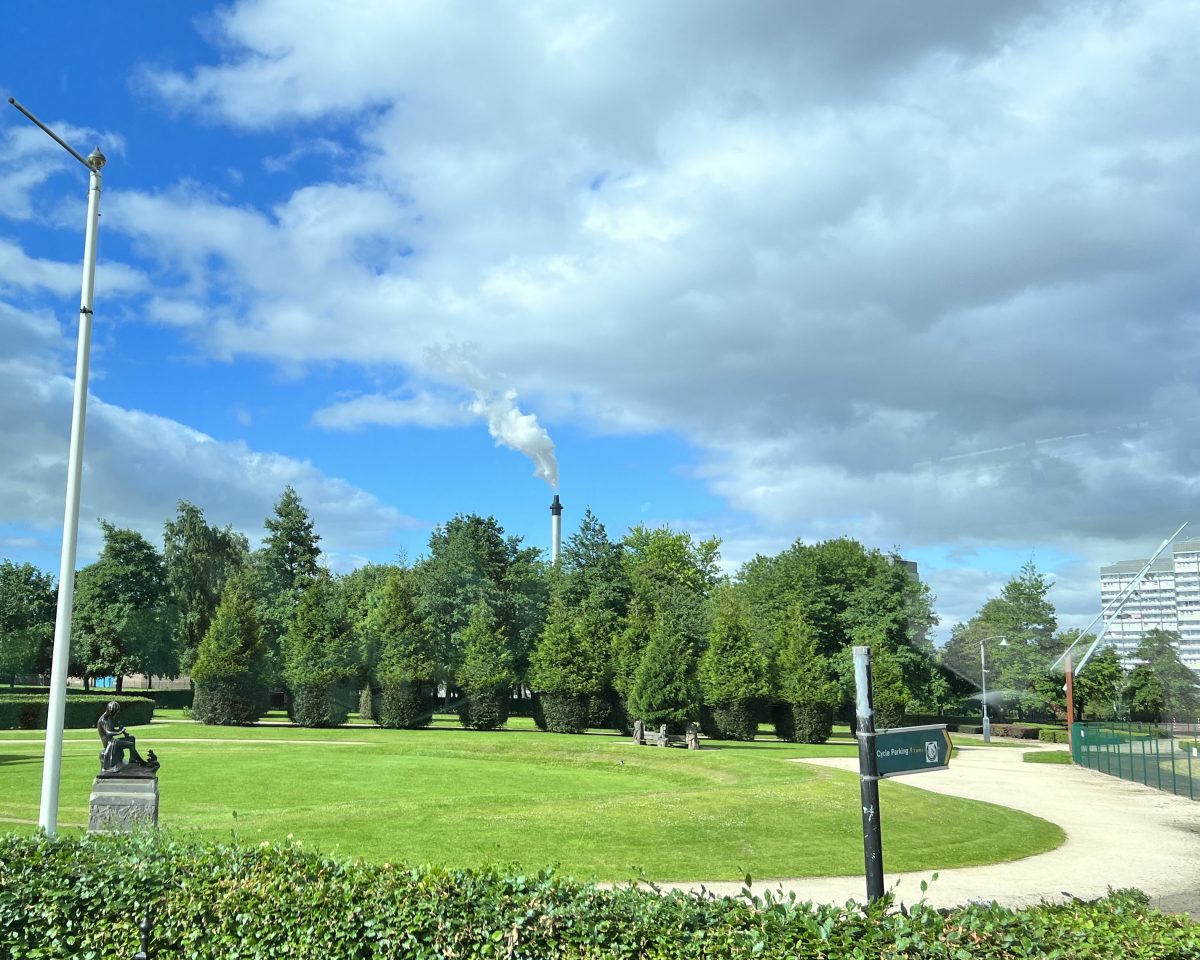
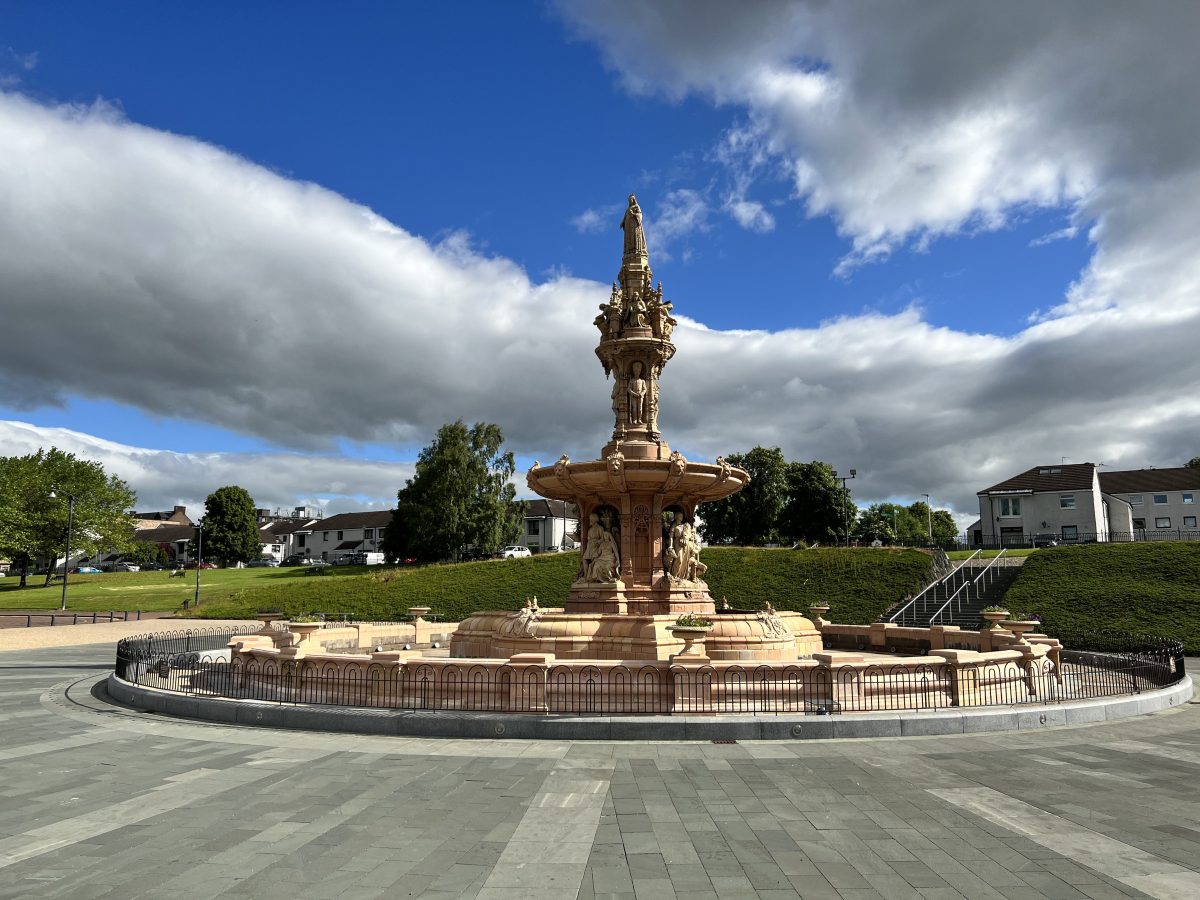
The Doulton Fountain, made by the Royal Doulton Company, is the largest terracotta statue in the world. Originally made for the 1888 International Exhibition and the Queen’s Jubilee. It was moved to Glasgow Green in 1890. It depicts Britain’s 4 colonies – Australia, India, Canada and South Africa. The Queen is at the apex followed by handmaidens then soldiers and sailors.
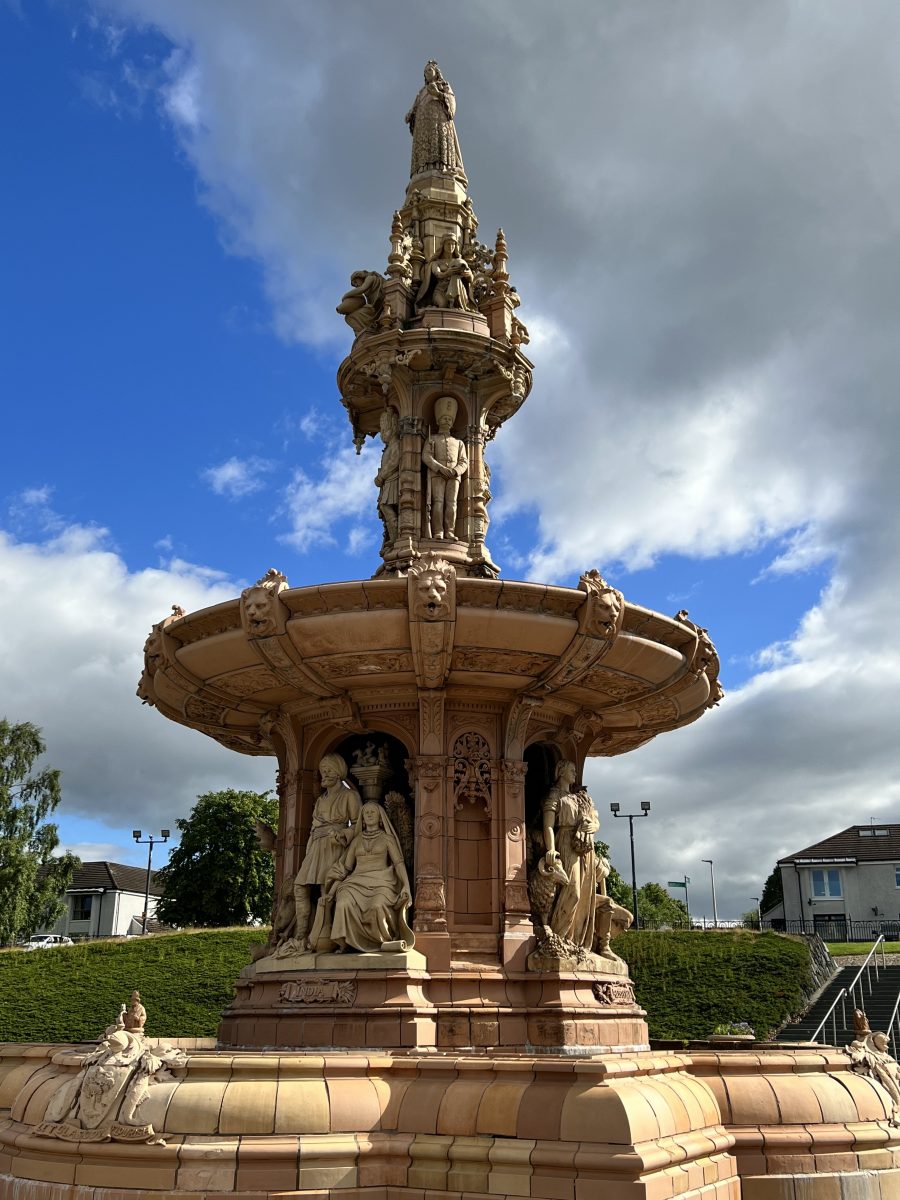
Canada is depicted with a man and woman (settlers?). The man is holding a moose head (which is very Canadian) and the woman holding a sheaf of wheat. Poking out at the bottom is the beaver. It just makes one so proud.
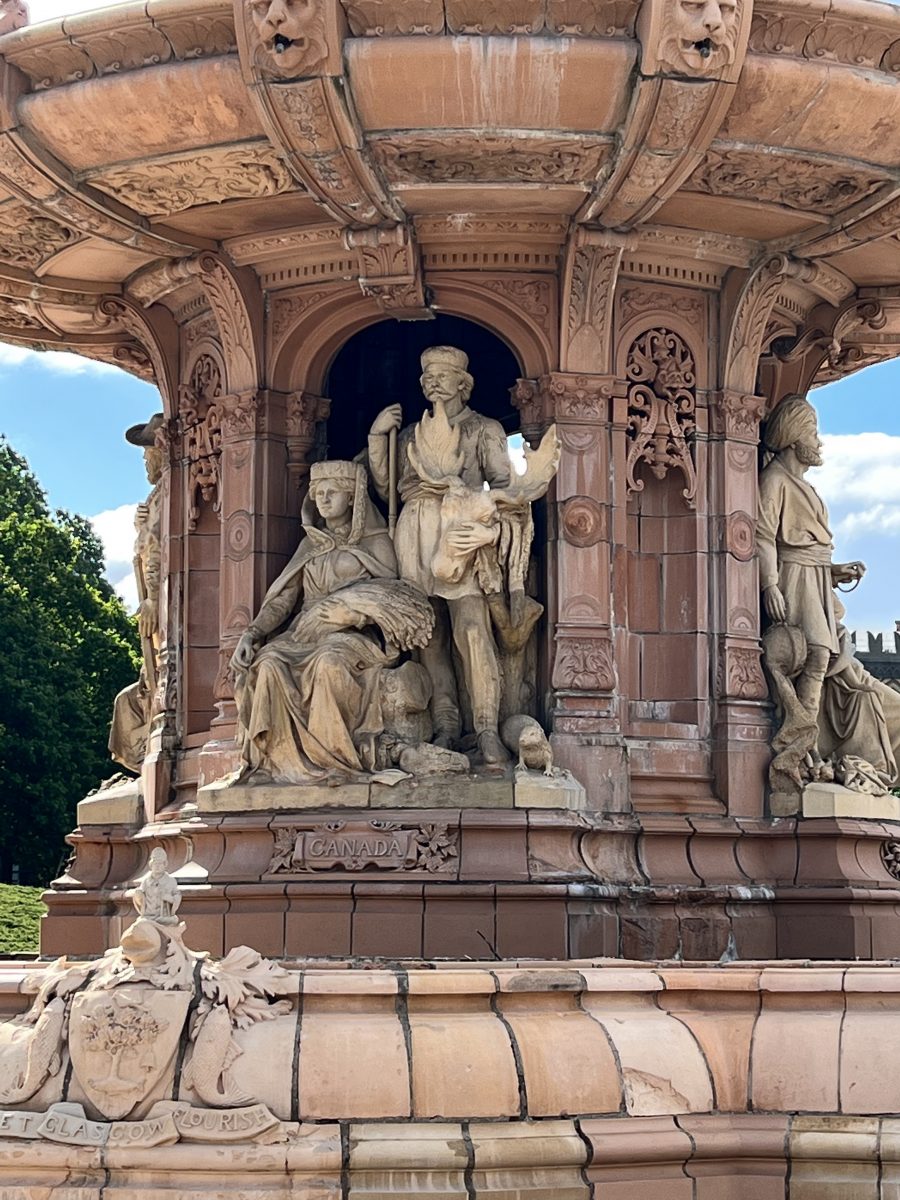
Colin continued. Mungo returned when there was a new local ruler. During his exile it is believed he met the pope who gave him a bell. Back in Glasgow, Mungo put the bell in his church. The local ruler had to go fight in the crusades but left some knights behind to protect the town. The queen and a knight had an affair, thinking the king would be killed in war. She gave the knight her gold ring. When he learned of the king returning he fled and threw the ring into the river.
Across from the fountain is the People’s Palace. It opened in 1898 and, as the name implies, it was a place for the everyday person to hang out.
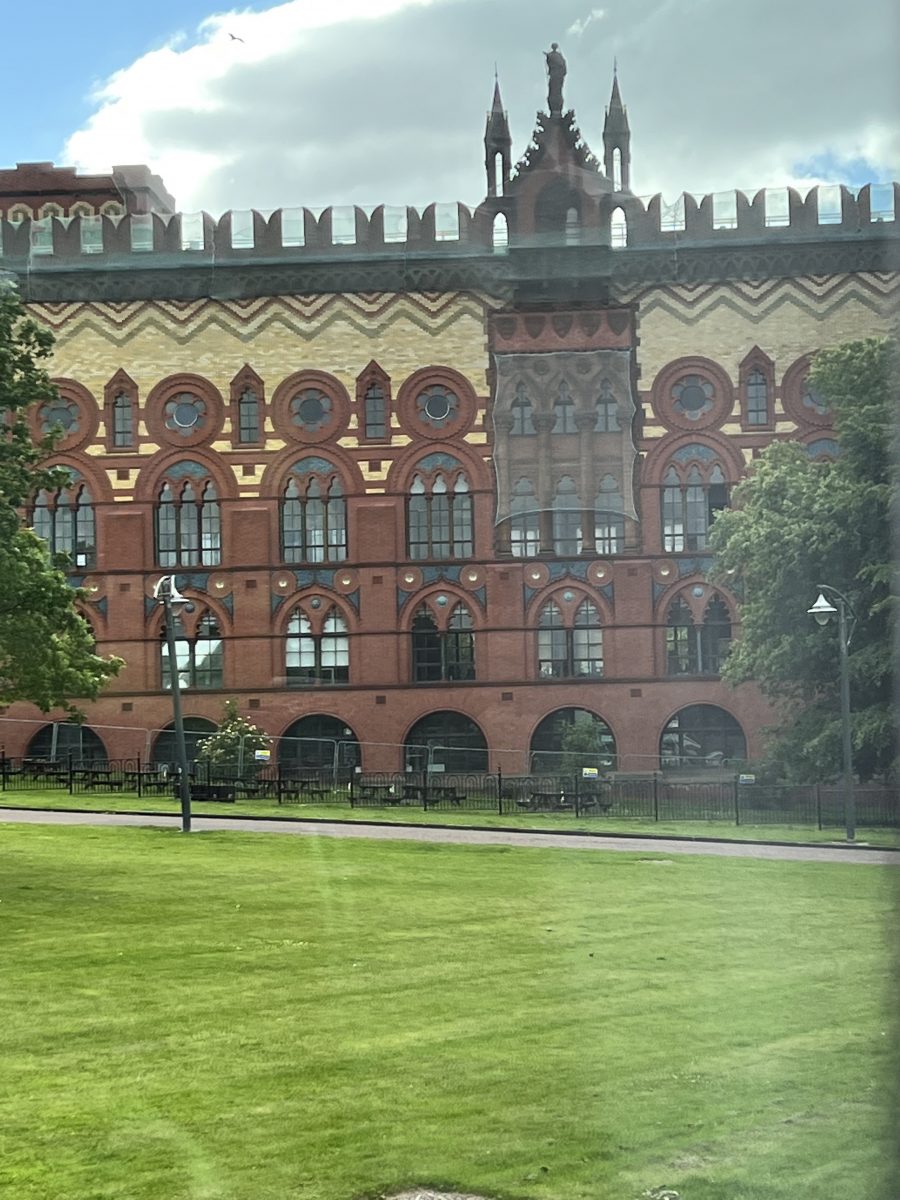
There were reading and recreation rooms, museum and a picture gallery.
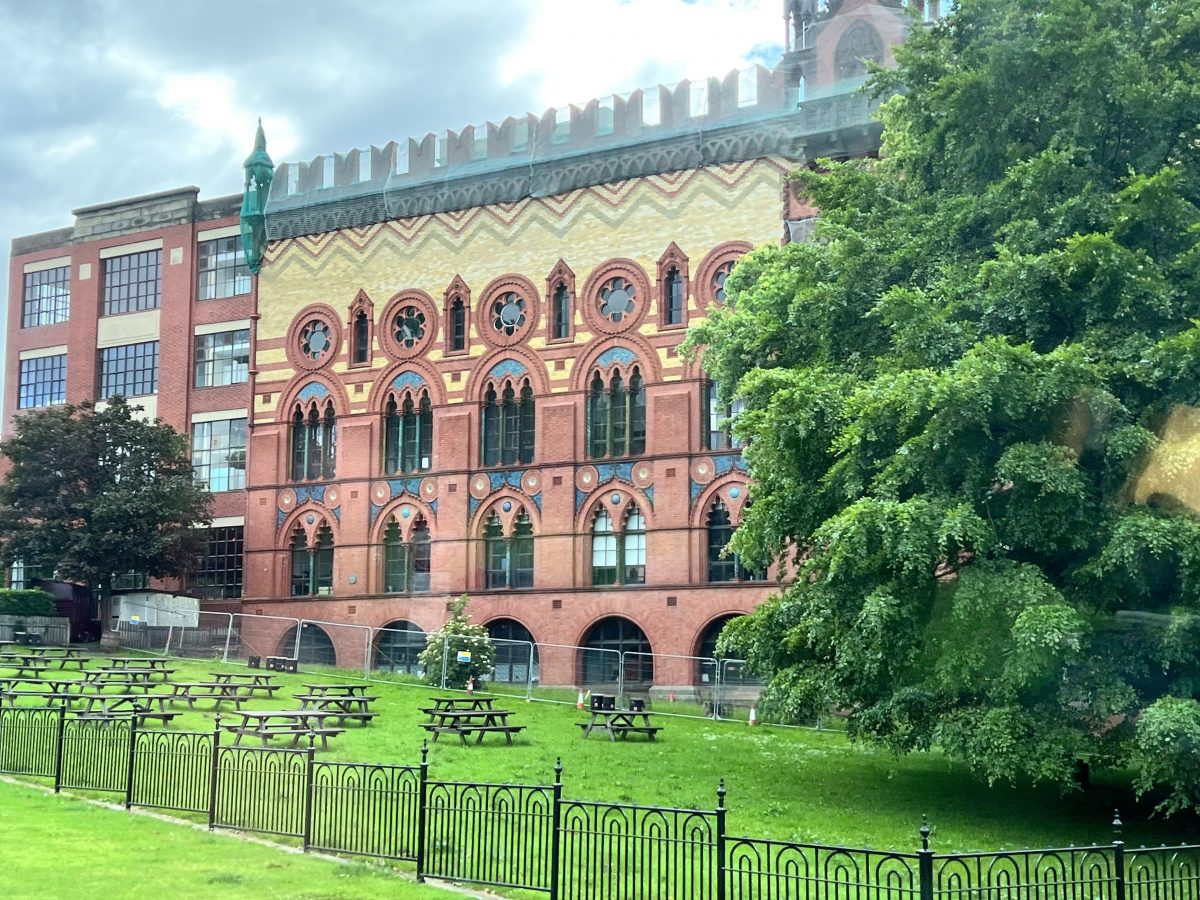
It was closed for a long time and had extensive damage and disrepair. It was going to be demolished but the local councillor said the people would riot. The east enders don’t have much. After 350,000 pounds it was refurbished and opened in 2019, only to be closed again due to COVID. It is now a museum and open 2 days a week. It also houses shops and offices.
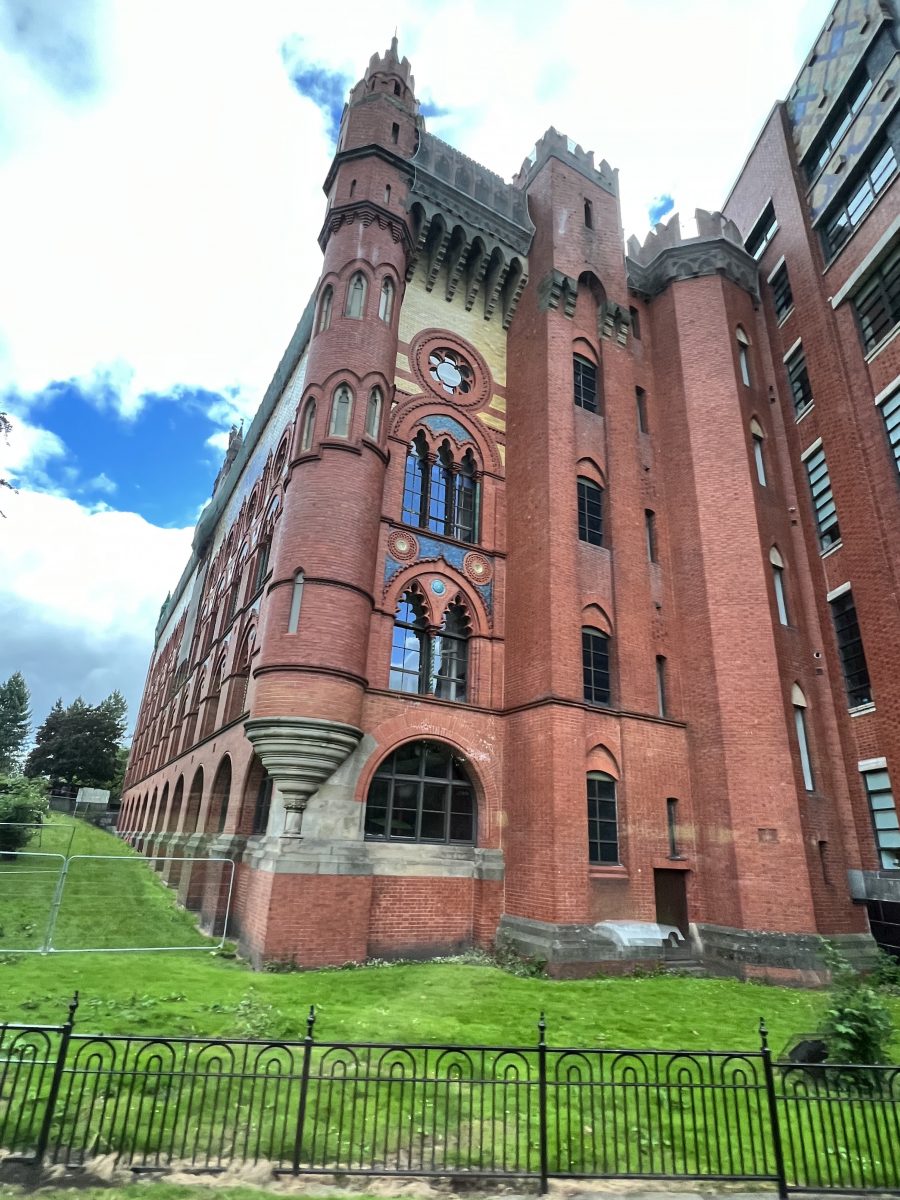
Colin continued the Mungo story. News came to the queen that the king survived the war and was returning. The knight had fled. The queen asked Mungo if he could help get her wedding band back. He said he would if she repented and promised to remain faithful – which she did. Mungo had a monk go fishing and to bring the fish to him. Mungo sliced open the fish and the ring was inside the stomach.
As we travelled through the city, Colin would stop the story to point out some place. I tried to grab a few pics through the bus window – like the Bailie James Martin Memorial Drinking Fountain
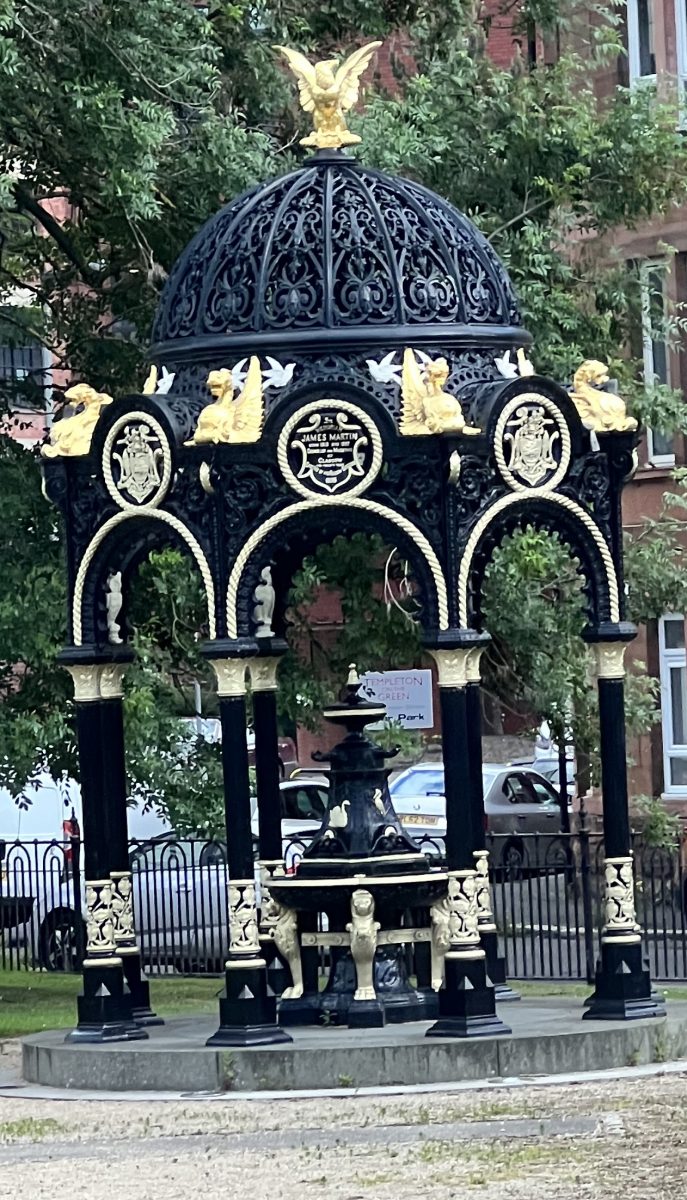
Back to Mungo. By this point I was wondering where this was all leading. As a novice, Mungo was put in charge of the monastery fire one night. It was his job to keep it going so the room would be warm when Saint Serf woke up. However, Mungo fell asleep. Some of the jealous monks snuck in and put the fire out, figuring Mungo would get the blame. When Mungo woke, he got some branches and prayed over them. They burst into flames so he could restart the fire.
As Colin tried to find a bridge to cross the River Clyde, it was becoming clear each one was blocked. We had to cross to get to our distillery tour. So he took the tunnel. He explained that the tunnel is only open to trucks and coaches. It was built so the heavy traffic would bypass the city houses.
Finally, Colin brought the Saint Mungo story to an end. It represents Glasgow’s poem and the Coat of Arms. Each line represents a miracle that Mungo performed which is how he got his sainthood.
“There’s the tree that never grew,
There’s the bird that never flew,
There’s the fish that never swam,
There’s the bell that never rang.”
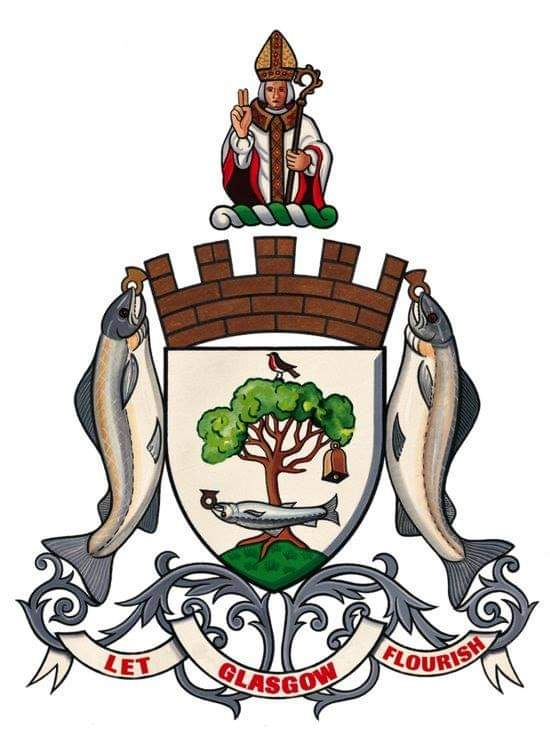
What I liked about the Clyde Distillery tour was that it was also about the history of the docks in Glasgow. They have a photo from the days when the docks were the lifeblood of the city. One of our tour members, Joe, was born in Glasgow. He pointed to the building in the right of the photo and said that is where he got his start as an electrician’s apprentice. Life comes full circle. The pumphouse tower to the left of centre is where the Clyde Distillery is now.
The pumphouse was used to power the swing bridge open and closed
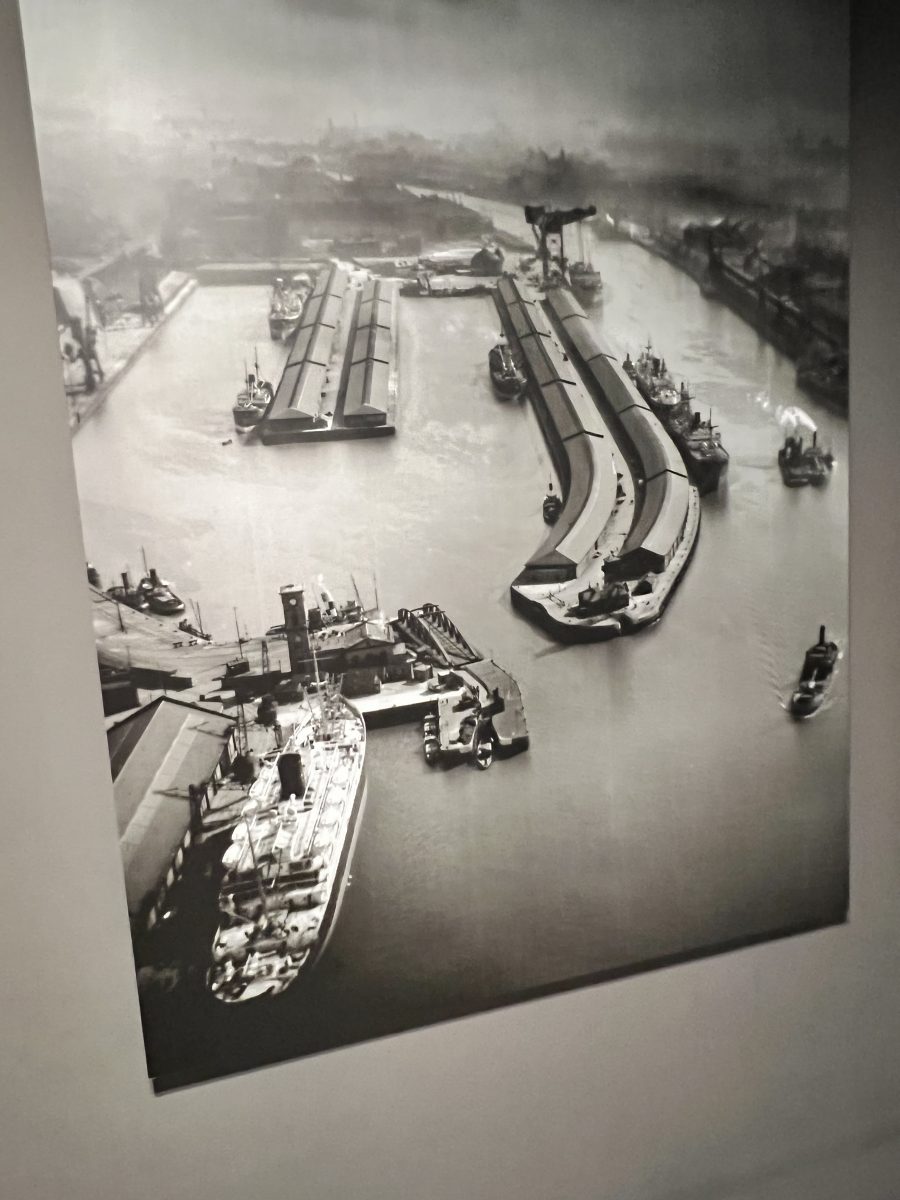
Compare to how the dock is today. There’s a warning sign not to enter.
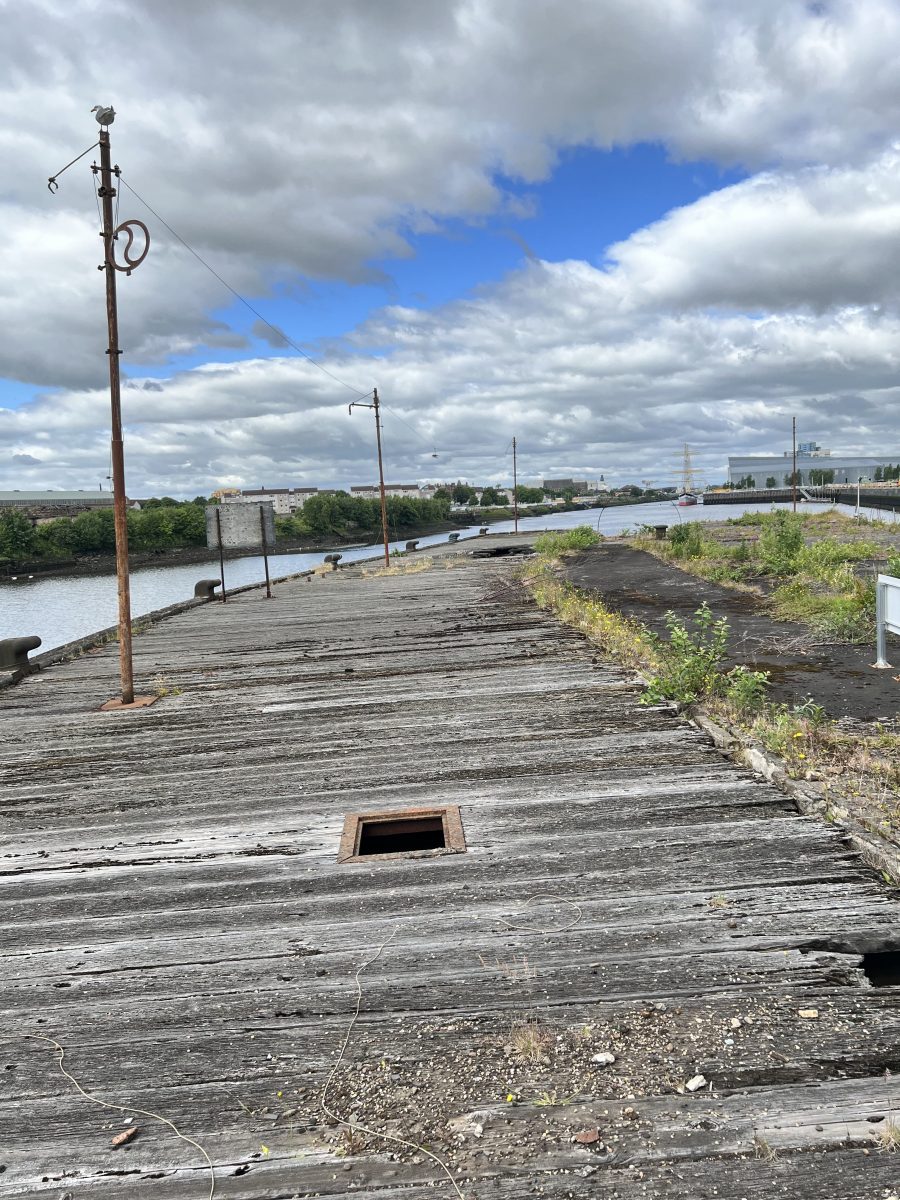
But they did an amazing job in retrofitting and refurbishing the building for the distillery.
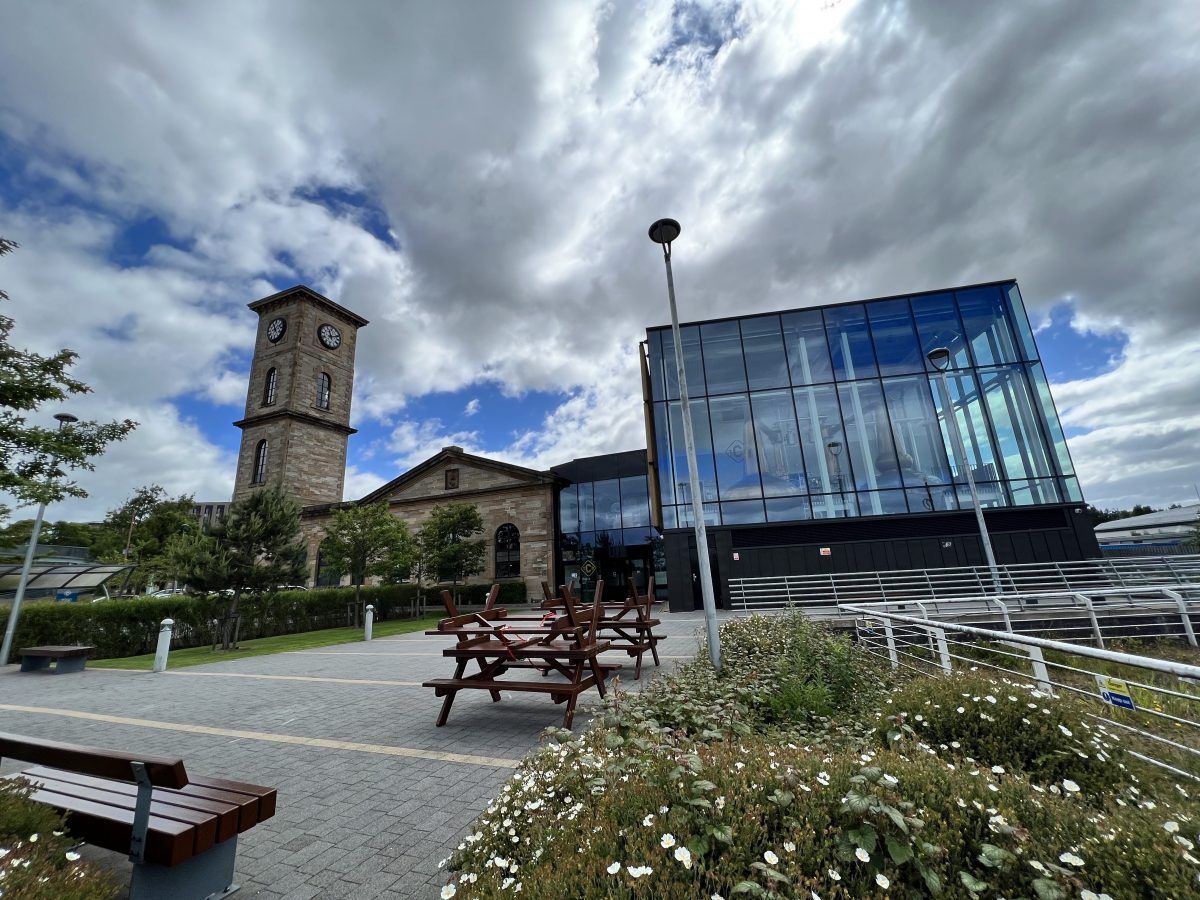
They tour guide explained the whole process and how each section is involved in the process. To be Scotch Whisky, it needs to be aged 3 years and a day. They have an off site storage facility where their scotch is aged.
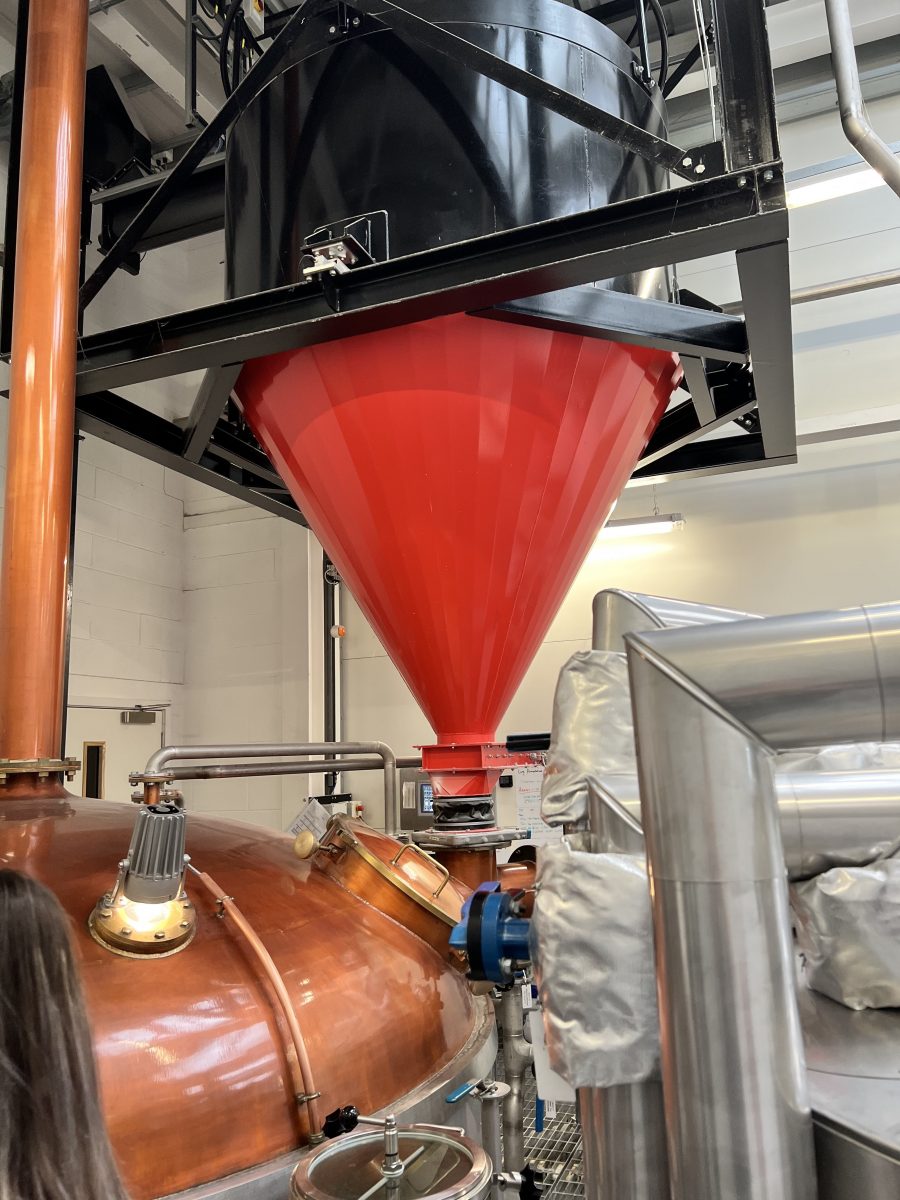
As our guide joked, the water does not come from the River Clyde. They pipe it in from Loch Katrine. Tim Morrison founded the Clyde Distillery in 2017. And on October 15th, 2021, their first batch of Glasgow’s single malt whiskey was delivered. The glass windows provide a great view of the River Clyde and surrounding greenery.
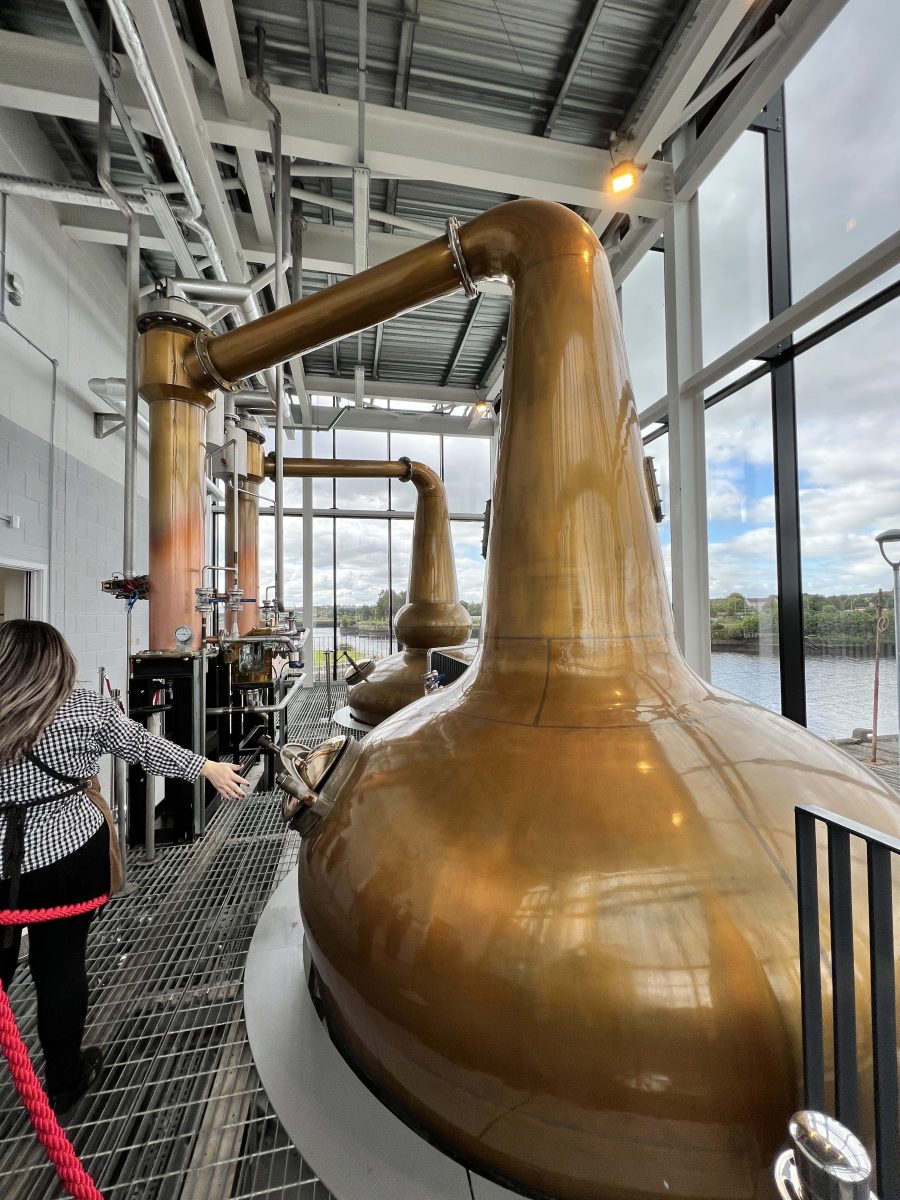
Of course, what whisky tour would be complete without a tasting. The offerings were a new single malt, then one aged in a bourbon cask and another in a sherry cask. She also showed how to use a pipette to add a couple of drops of water to enhance the alcohol taste. Veronica, who sat next to me, did like like whisky. So she passed her samples to me.
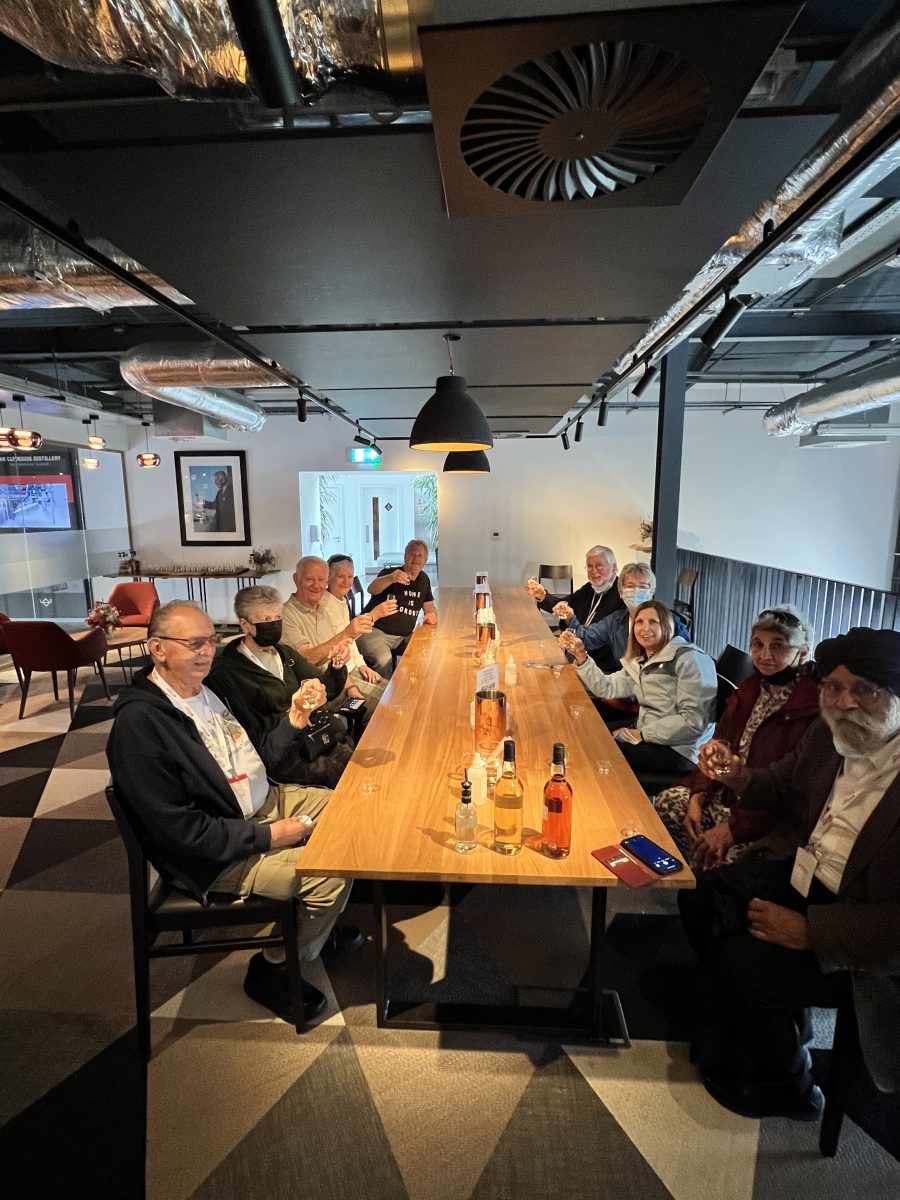
I asked what she thought about adding ice. She wasn’t opposed to a cube but suggested Whisky Stones. They are granite cubes that you store in the freezer. They chill the whisky without diluting it. I picked up a box of stones and have been using them regularly.
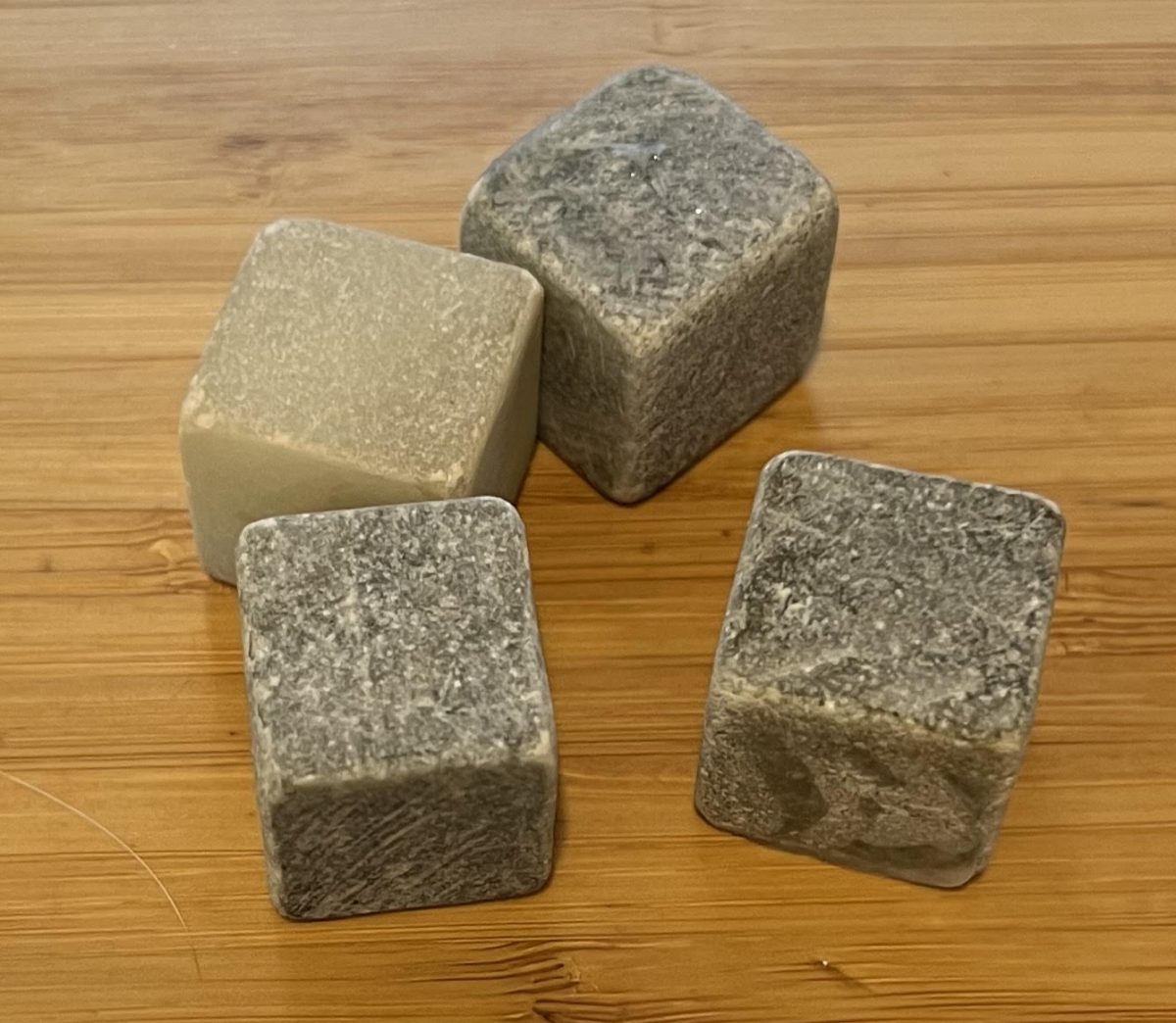
It was a great tour with lots of information. Hopefully Senior Discovery Tours will keep it as part of the itinerary. It was not time to head to the hotel to check in and grab some lunch. This afternoon I will see another side to Glasgow.
